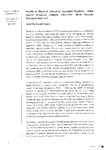Health & Physical Education Specialist Teachers: What should Brisbane Catholic Education (BCE) Primary Principals look for?
| dc.contributor.author | Lynch, TJ | en |
| dc.contributor.editor | Hansen, P | en |
| dc.date.accessioned | 2015-12-28T08:26:03Z | |
| dc.date.accessioned | 2016-10-09T05:08:04Z | |
| dc.date.available | 2015-12-28T08:26:03Z | |
| dc.date.available | 2016-10-09T05:08:04Z | |
| dc.date.issued | 2007-09-05 | en |
| dc.identifier.issn | 1834-7258 | en |
| dc.identifier.uri | http://hdl.handle.net/10026.1/6323 | |
| dc.description.abstract |
The Health and Physical Education key learning area within Brisbane Catholic Education was given significant status during the release of the 1999 Health and Physical Education documents along with the adoption of the third enterprise bargaining agreement (EB3). EB3 entitled Catholic primary classroom teachers to 120 minutes of release time per week (Catholic Education Employing Authorities in Queensland, 2000). Release time is usually provided for classroom teachers by employing a specialist teacher. It seems to be a popular choice for many schools to employ a Health and Physical Education teacher so that both demands, to implement the Queensland Health and Physical Education documents and to provide 120 minutes of release time, could be met. Furthermore, Catholic schools educate approximately one in five school students in Australia (Australian Education Union, 2003; MCEETYA, 1995) and there has been increased effort and pressure from the Federal and Queensland Governments to increase physical activity within the community to help combat the growing health concerns surrounding students’ sedentary behaviour. Employing a HPE specialist teacher is given further impetus with BCE introducing a Prep year in 2007. So what qualities should Primary School Principals search for and expect in a Health and Physical Education specialist teacher? | en |
| dc.format.extent | 3 - 10 | en |
| dc.language | English | en |
| dc.language.iso | English | en |
| dc.publisher | Australian Catholic University | en |
| dc.relation.replaces | http://hdl.handle.net/10026.1/4054 | |
| dc.relation.replaces | 10026.1/4054 | |
| dc.title | Health & Physical Education Specialist Teachers: What should Brisbane Catholic Education (BCE) Primary Principals look for? | en |
| dc.type | Journal Article | |
| plymouth.author-url | http://media.wix.com/ugd/842c5e_ab18e6ab237e4800b6ca3a45d413ce28.pdf | en |
| plymouth.issue | 1 | en |
| plymouth.volume | 79 | en |
| plymouth.publisher-url | http://trove.nla.gov.au/work/31961795?q&sort=holdings+desc&_=1451290820456&versionId=38799325 | en |
| plymouth.publication-status | Published | en |
| plymouth.journal | Journal of Catholic School Studies, 79(1), 3-10. | en |
| plymouth.organisational-group | /Plymouth | |
| plymouth.organisational-group | /Plymouth/Faculty of Arts, Humanities and Business | |
| plymouth.organisational-group | /Plymouth/Faculty of Arts, Humanities and Business/Plymouth Institute of Education | |
| dc.publisher.place | Australia | en |
| dcterms.dateAccepted | 2007-01-01 | en |
| dc.rights.embargoperiod | No embargo | en |
| rioxxterms.licenseref.uri | http://www.rioxx.net/licenses/all-rights-reserved | en |
| rioxxterms.licenseref.startdate | 2007-09-05 | en |
| rioxxterms.type | Journal Article/Review | en |
| plymouth.oa-location | http://media.wix.com/ugd/842c5e_ab18e6ab237e4800b6ca3a45d413ce28.pdf | en |


